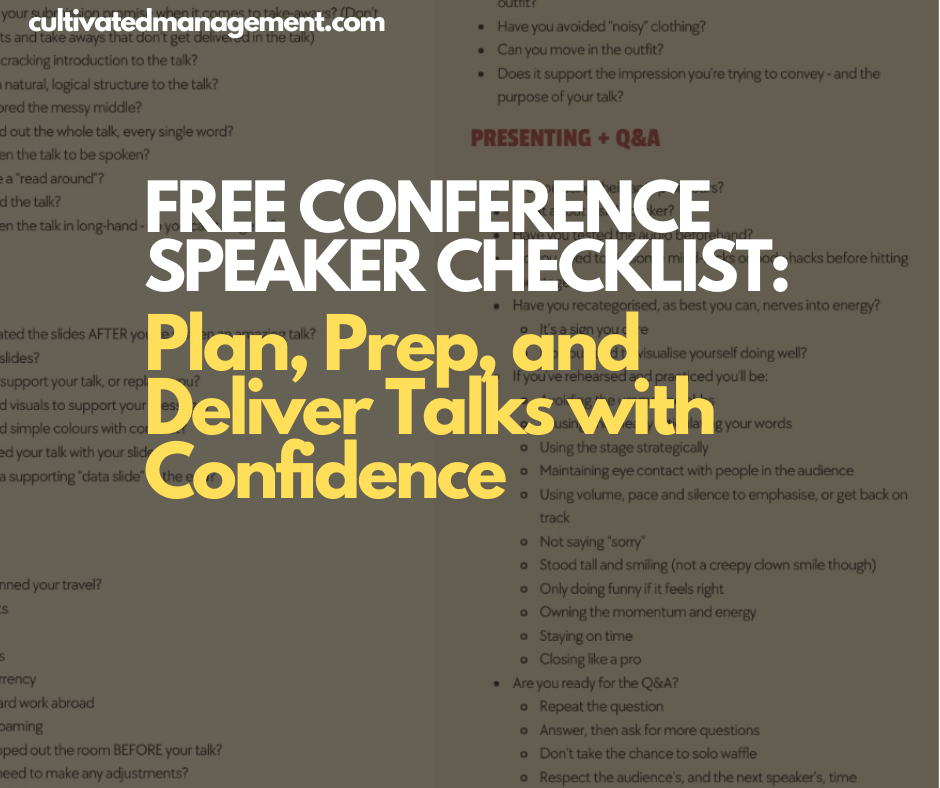
Plan Like a Pro: Free Conference Speaker Checklist
Over the years, I’ve delivered hundreds of talks — Keynotes, track sessions, tutorials — and one lesson stands out: planning is everything.
In my book Zero to Keynote, I share how to organise yourself, craft a talk worth listening to, and deliver it with confidence, all while weaving in the principles of great communication.
About 75% of the book focuses on preparation because that’s where the magic happens. The best speakers still struggle if their talk is poorly thought out. Charisma only takes you so far — real value comes from structure and prep.
From generating ideas to structuring your flow, choosing impactful language, and rehearsing, preparation is key.
That’s why I created a free checklist for conference speakers, available with the Meeting Notes newsletter subscription. It’s designed to complement the book and serve as a handy reference for anyone building a talk.

Sign up for Cultivated
Helping leaders—and anyone striving to grow—communicate with clarity, lead with confidence, and bring creativity and learning to everything they do.
No spam. Unsubscribe anytime.
The Power of a Checklist
A good checklist does more than remind you of things — it guides your thinking and ensures nothing gets missed.
I use this checklist for every talk to:
- Confirm my core message and audience fit
- Ensure I deliver on everything promised in the conference submission
- Plan writing and rehearsal time
- Consider travel, logistics, and the venue
- Prepare the presentation itself — including small details like IT setup, audio, clothing, and logistics
Planning in advance also reduces nerves and ensures you perform your best.
Zero to Keynote: Your Field Guide
This checklist is my companion from idea to stage. It helps:
- Overcome fear of public speaking
- Structure and deliver talks worthy of Keynotes
- Navigate speaker nerves and travel logistics
- Ensure you focus on what matters so your talk is confident and compelling
By following a plan like this, you’ll know your content inside out, reduce stress, and be ready for anything the day of the talk.
My book Zero to Keynote is now out in print and digital. It’s a step-by-step guide to speaking at conferences—from sparking ideas and submitting proposals to crafting your talk, rehearsing, and delivering a presentation that stands out.
Get Your Free Checklist
Subscribers to the Meeting Notes newsletter receive a direct link to download the High-Red PDF version — ready to print and use for any talk. Not yet subscribed? Sign up today — it’s always an easy unsubscribe.
No spam. Unsubscribe anytime.
Sign up for Cultivated
Helping leaders—and anyone striving to grow—communicate with clarity, lead with confidence, and bring creativity and learning to everything they do.
No spam. Unsubscribe anytime.
